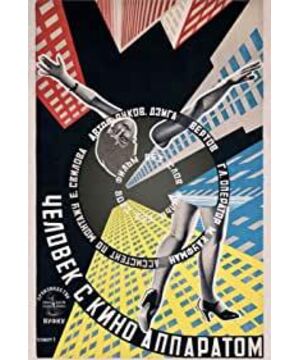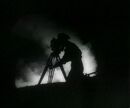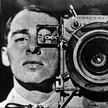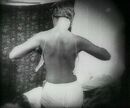At the beginning of the movie, the audience came in one after another. Under the cue of stop motion, they sat in front of the movie screen in accordance with the social order and looked at the black and white picture. With a simple clip, we jump into the world of the silver screen. We saw the Soviet Union at that time, people were working, exercising, taking the bus. In this post-industrial era, people no longer need to engage in agriculture, forestry and animal husbandry to feed themselves. Under the social division of labor, people have time and ways to do different things. Film itself is also a product of industrialization. Filmmakers also began to use images to record and tell the lives of other people. The world on the movie screen actually happened outside the theater. The people on the movie screen look at the images of the past, and they themselves are recorded as images.
As audiences, we sit in the theater and examine the world through the lens of the camera, not the screen. The most common method used in film editing is the "shot/reverse shot". We would love to see the relationship between the characters, which is formed by what the characters see and what the characters feel. In a basic "shot/reverse shot", we first see the scene or person that the character encounters, and then in the reverse shot we see the character's reaction, either sadness or joy or zero degrees. You and I, who were sitting in the auditorium, also began to think, if it were me, if it were me who encountered all this, how would I react. When Vertov pointed the camera at the camera, he just wanted to see how the "camera" would react when she saw all this? The eyes in the lens blink.
In his experimental film "Princess Shirin", the master Abbasskia Rostami turned the camera on the audience in the cinema, who made those expressions while watching the shady screen. We have seen movies that are all first-perspective (subjective shots), so "Princess Shirin" is a movie composed of "reverse shots". Movies are the lens and the reverse lens, so that we can empathize with the protagonist. Every audience should also have their own counter-camera, because we don't necessarily sympathize.
View more about Man with a Movie Camera reviews







